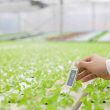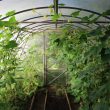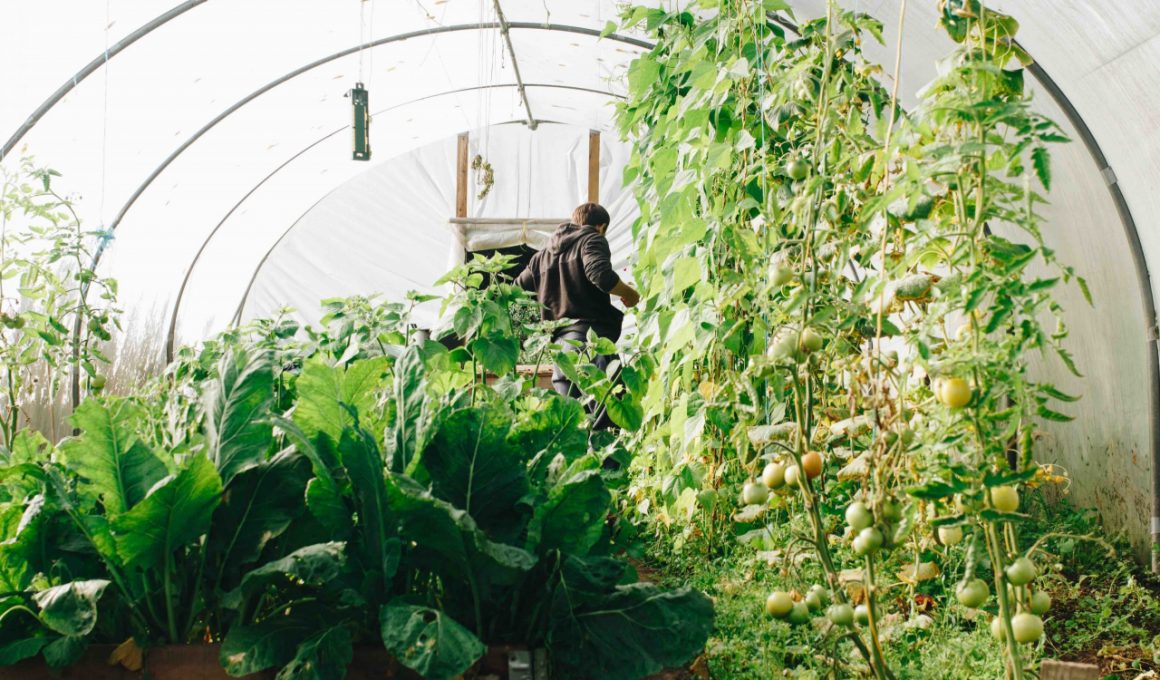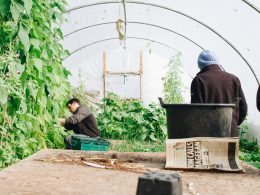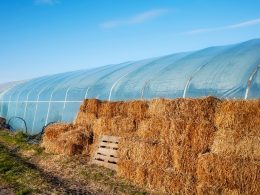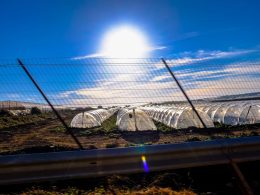Green House Adviser is reader-supported. When you buy through links on our site, we may earn an affiliate commission. Learn more
If you are a beginner in the world of greenhouses and don’t know where to get started, don’t worry, we are here to help. By reading through this article, you will be able to fully understand greenhouses, their types, and other important factors to consider before building a greenhouse.
Types of Materials for Your Greenhouse
You can build your own greenhouse from any materials you might have available, but choosing the right materials will provide long-term benefits and save you time in the future. The type of material you choose will depend on the size and shape of your greenhouse as well as how much money you want to spend on it. One thing to keep in mind is that each material has its own benefits and drawbacks, so it’s important to decide which one best suits your needs.
Polycarbonate greenhouse
Polycarbonate is a type of plastic often used in the construction industry, especially for building greenhouses. It’s made up of two parts: A hard, durable outer layer and a soft, flexible inner layer. The outer layer provides protection from UV rays, strong winds, and other environmental factors, while the inner layer provides insulation properties.
One benefit of using polycarbonate as a greenhouse cover is that it’s easy to clean and maintain because it doesn’t absorb water or dirt like some other materials. Polycarbonate also retains heat well throughout the day, which can help extend growing seasons for certain plants and vegetables.
However, keep in mind that the plastic composition makes this material highly flammable, so it needs to be installed in a way that prevents fires from spreading quickly.
Glass greenhouse
As the name suggests, a glass greenhouse is a type of greenhouse made out of glass and is used to grow plants in cold climates where it would otherwise be too cold to grow them outdoors. The pros of using a glass greenhouse include the fact that they are more energy efficient than traditional greenhouses. This is because they use less energy to heat the air inside the greenhouse. However, they can be more expensive than traditional greenhouses to purchase and maintain over time.
Tunnel greenhouse
A tunnel greenhouse is a greenhouse that is covered by a polyethylene film. It can be made with one or two tunnels, which run parallel to each other. The tunnel greenhouse can be either cold-tunnel or hot-tunnel.
Tunnels are the most common type of greenhouses for commercial vegetable production in temperate climates. They are more common than other types because they allow for greater growing efficiency than traditional above-ground greenhouses. They also offer better protection from wind, hail, rain, and snow than most open field systems do. But keep in mind that, If not installed properly, condensation build-up can harm plants.
Types of Materials for Your Frame
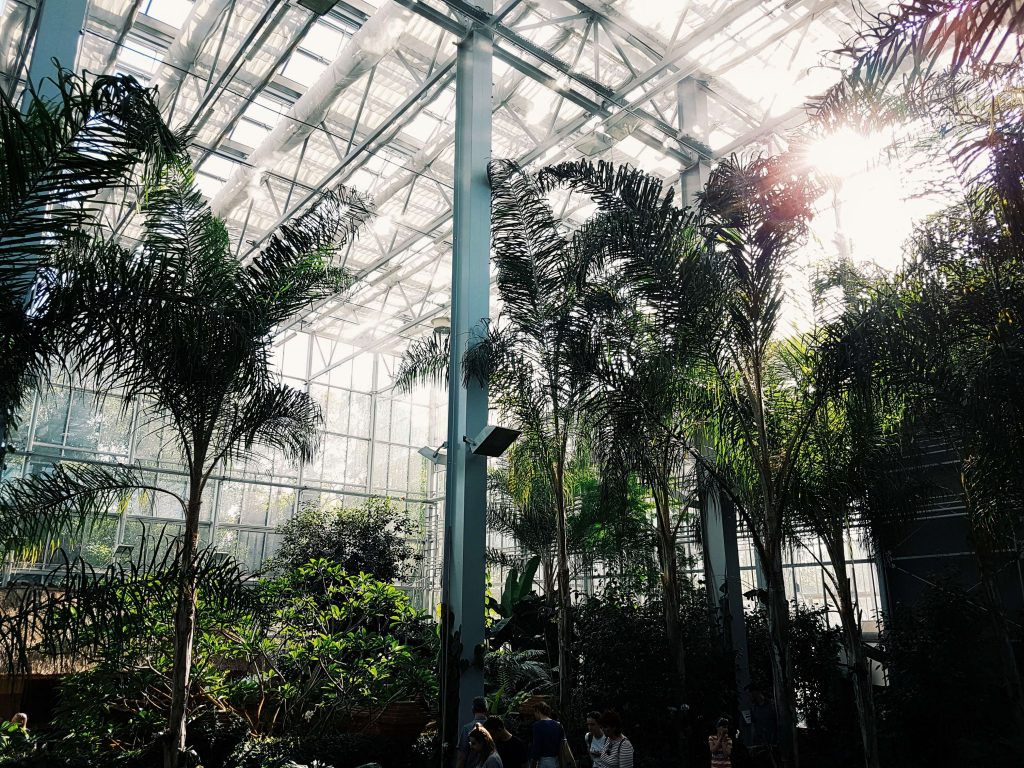
If you’ve pondered the possibility of building a greenhouse, having a firm idea of what material to build it from is likely pretty high on the list of things to think about. Those who frequently visit their local garden center know that there are options on the market for greenhouse framing materials. Using a combination of them is not uncommon either. The most common greenhouse frame choices are wood, aluminum, galvanized steel, and PVC plastic pipe.
Wood
Wooden greenhouses are a popular choice for those who want to grow plants and flowers. These structures can be built in a variety of shapes, sizes, and styles; however, wood is not that practical as the frame for a greenhouse unless the structure you are building is more like a sunroom or garden shed.
Wood has great insulation value and is pretty easy to fabricate and assemble into a frame. But greenhouses are damp spaces, and wood will eventually rot under the ongoing presence of dampness found in a greenhouse.
But if you choose wood, go for a species with known resistance to moisture and rot, like cedar or redwood. Or, you can use chemically treated wood designed for outdoor. Whatever wood you use, remember: applying a sealer every few years extends its life.
Aluminum
Aluminum greenhouses are also a great choice for gardeners who want to grow their plants and flowers. Aluminum is a lightweight material that is easy to work with and does not rust, making it a good choice for building a greenhouse. The aluminum material can be painted or treated with any number of coatings to help protect the structure from the elements.
Unfortunately, aluminum is not very strong, so the support members must be made from heavy gauge pieces or doubled up for strength when used for a frame. Aluminum does, however, provide a good rigid form for glass or polycarbonate panels.
Galvanized steel
Galvanized steel offers durability at a low price. Since steel is strong, your greenhouse will require fewer framing members, meaning that fewer shadows will be cast into the greenhouse. However, most steel frames are designed to be used with polyethylene film rather than solid glass or polycarbonate panels. Greenhouses with galvanized steel frames and polyethylene film covering are popular with commercial growers, but they are not quite attractive in a residential setting. And a significant con for galvanized steel is that the galvanizing will eventually wear, and the steel will rust.
PVC plastic pipe
PVC plastic pipes are inexpensive, lightweight, and easy to assemble. PVC also has the benefit of allowing less heat loss than metal framing. Greenhouses with these frames typically use polyethylene film for walls.
PVS plastic pipes are usually used for smaller, hobby-type backyard greenhouses because pipe does not work very well for large greenhouses.
The most significant negative of this material is that sunlight can deteriorate it with time. But a PVC greenhouse that has UV-protected pipes should last at least two decades. Another disadvantage is that the frame pipes must be large in diameter to compensate for PVC’s relative lack of sturdiness, and so the frame casts more shadows than a metal one.
What Is the Best Place to Install a Greenhouse?
There’s no doubt that having your own greenhouse is a lot of fun. You’ll be able to sprout seedlings, grow vegetable plants, and even maybe flower plants. But what’s the best place to install a greenhouse? Commonly, a greenhouse should be placed on the south or southeast side of the home, in a sunny position that receives the greatest sunlight from fall to winter. If this choice is not available, the east side is the next best alternative for the greenhouse.
How Large Should Your Greenhouse Be?
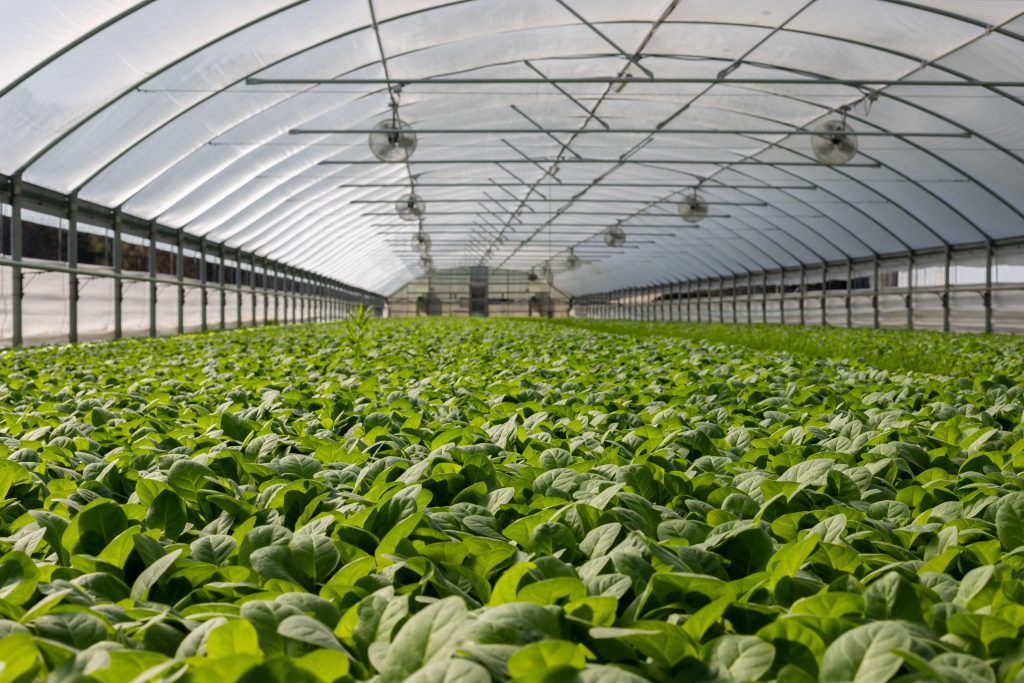
There’s no such thing as a one-size-fits-all greenhouse. The size and shape of your greenhouse should be based on what you’re going to use it for. If you want something that will fit in the corner of your backyard, you can get away with a smaller greenhouse. If you have a large yard and want to use the space to grow large plants and flowers, then you’ll need something bigger.
How to Heat Your Greenhouse During Winter?
The best way to heat your greenhouse during winter is to use a combination of several heating sources. The most common and cost-effective method is the use of electric heaters. These are relatively inexpensive, easy to install, and can be moved around easily. Another option is to use a gas heater, which is more expensive but much more efficient. You can also use wood stoves or propane heaters; however, these are more expensive and require more maintenance than other methods.
Important Factors to Consider Before Building a Greenhouse
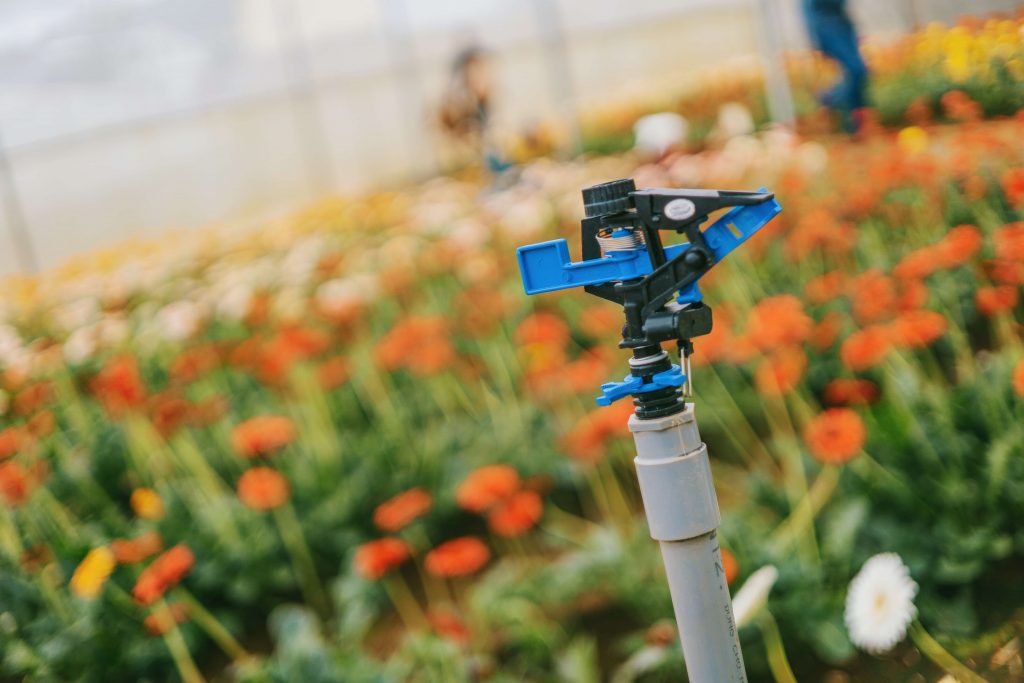
Greenhouse construction is an art, and it requires careful planning to make it a success. There are many factors involved in the process, from initial design to installation. Here are some important things to consider before making your greenhouse plans.
A good foundation for your greenhouse
A good foundation for your greenhouse is an important step in building the structure. Your options for a greenhouse foundation are concrete, piers or posts, or a combination of both. If you want something practical and durable for your greenhouse we suggest going for a solid concrete base.
Good ventilation in your greenhouse
Good ventilation in your greenhouse is important for a number of reasons. Ventilation keeps carbon dioxide levels low, which prevents plants from becoming stressed or succumbing to disease. Ventilation also helps reduce the humidity inside the greenhouse, preventing mold and mildew from developing on leaves and other plant parts.
Adequate lighting
One of the most important aspects of greenhouse construction is adequate lighting. It is important to position your greenhouse somewhere it can get a lot of sunlight. Most greenhouses are designed to be used during daylight hours and may not have adequate light to grow plants at night. For this reason, you should consider adding artificial lighting to your greenhouse after it has been built.
Other Tips
Here are some other tips when building a greenhouse:
- Choose your location wisely
- Plan out your design
- Choose an appropriate design for your needs
- Consider using recycled materials.
The Bottom Line
These are hopefully some useful tips for anyone who is thinking about building a greenhouse. If you are considering a new addition to your property, a greenhouse can be an excellent choice as it will increase the value of your home and will provide you with fresh vegetables and fruits throughout the year, no matter where you live.
